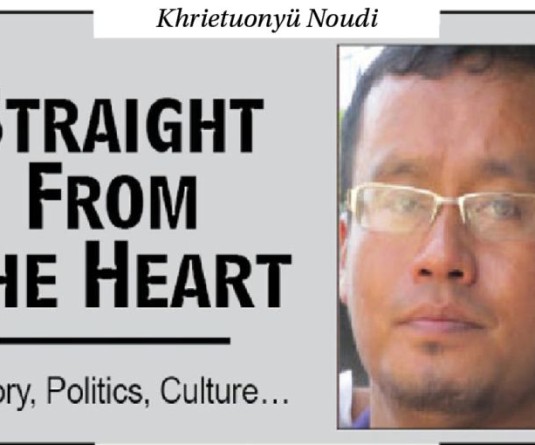
Imna Imchen
The question about the separation of Church and State has been debated for over two thousand years. About a century before the birth of Christ, Rome have witnessed the expansion of its empire. The whole known world was for the first time brought under the effective control of one single power – Rome and that has fostered the growth of a homogenous civilization through out the Mediterranean world. This has created an environment favorable for the reception of the gospel that proclaimed the unity of all human races in the fact that all men are under the penalty of sin and are offered salvation that makes them part of the of a universal organism, the Christian church, Christ’s body. This opportunity was fully exploited by the early Christians in spreading the gospel. But the toleration of pluralism in Rome was limited. The Romans, despite their customary religious toleration, did not regard Christianity as a religion because it not belong to any nation or nationality. To them, Christianity was a private faith that embraced people of different nationalities and races, barbarians as well as civilized. It lacked national identification like the Greeks and the Jews. As such, Christians gathered privately in small numbers for prayers and religious meetings. Rome turned against Christians when it found that people of this new faith refused to participate in the state organized cult and practices. They accused them of being responsible for any misfortunes in the empire. Thus history records the beginning of the persecutions of the Christians from 64 A.D under Emperor Nero that lasted till 205 A.D.
Christianity endured the harrowing persecutions it suffered in the hands of kings and rulers that used all their strength and cunning against them. The storms it overcame is indeed remarkable and man and woman who withstood the tyranny adorned the pages of church history. By the end of the first century, it become better organized and strong. The office and the authority of the Bishop was recognized and held high for the first time. Special honor was given to it. By 175 A.D, the New Testament canon was also completed. But, with the growth of Christianity as an organized religion they began to openly defy and reject the obedience to the Roman gods which further escalated the persecutions of the Christians by the Romans. Between 284 and 324 A.D, persecution of the Christians by the Roman was at its worst. Churches were burned, sacred books confiscated and clergies were imprisoned and persecuted. In 313 A.D at a meeting in Milan, Constantine agreed to give religious freedom to Christians. It proclaimed freedom of consciousness, equality with other cults, and restoration of all church properties.
In the earlier part of the fourth century, the pagan Germans moved into the Roman territories and invaded them. By fifth and sixth century, most of the German tribes have converted to Christianity and it was declared as the state religion. From 800 to 1073 A.D., most of Europe and the Scandinavians were converted to Christianity. In 1073 A.D, Hildebrand, also known as Gregory VII, become the pope. He revolutionized the position of the pope. He held that as Vicar of Christ and representative of Peter, he could give or take away empires, kingdoms, duchies, marquisates and the possessions of all men. Everyone on earth, from the emperor down to the humblest peasant must acknowledge him. He objected any interference of the secular power in church affairs. This gave birth to the idea of crusaders. Between 1095 and 1270, eight crusades were set out. In the first Crusade, 600,000 men reached Jerusalem and massacred the Saracan barbarians and captured Jerusalem. By 1270, the papacy has reached the height of its power. King John of England and Philip of France were brought to their knees by the pope. The papal office dominated the political power and exerted control over the temporal rulers. The papal proclamation that every ruler should be a subject of the pope enraged many rulers. From 1409 to 1449, three attempts were made to reform the papacy but failed. Spiritual decay fuelled by rampant corruption and greed for money and wealth filled the church. In 1517, Martin Luther in his ninety five theses explained that salvation cannot be bought with money and that Christ has already pardoned the sinners. This sparked the spirit of Reformation and continued to spread out to other countries, giving birth to Protestantism. By the seventeenth century, Baptist as a denomination began to emerge in England. In 1611, Thomas Helwys, a breakaway member of General Baptist, founded by John Smyth, called for full religious liberty. He sent a letter to King James saying “the king is a mortal man and not God, therefore hath no power over immortal soul of his subjects to make laws and ordinances for them and to set spiritual lords over them”.
History has proven that the domination of one over the other has been fatal because they belong to two separate domains that require healthy coexistence and not dominance of one over the other. So “what exactly is a Church and a state?” A church is a body of believers, which derives its authority from God through the Word of God (Bible). A State, on the other hand, is an organized political community under one government that includes economy, culture and traditional life of the people. In other words, it derives its power from the collective wisdom of man. Thus, the church and the state represents two important but different aspects of human lives needing to supplement one another for the healthy growth of society without impinging upon each other’s realm.
Here in the diagram we see that the church and state are two different domains that shares an overlapping area of interest. This overlap can be understood as the domain of ethics and morals. Although the issue of morals and ethics seem to fall within the domain of the church, the state is constantly in the process of making laws and ordinances that concerns moral and ethical issues. For instance, the state of Nagaland passed the total prohibition act. On the other hand, the church stands as the moral and spiritual guide to the state.
So the question is, how separated are they? Can one impose authority over the other? One of the most recent controversies related to the separation of State and Church is in regard to Ao Senden and the Ao Baptist Arogo Mungdang (ABAM). The Ao Senden as the apex socio-cultural organization of the Aos have issued a dictate to all the Changki church workers to vacate their seat from the Churches that falls within the jurisdiction of any Ao organizations. The dictate of the Ao Senden undermines the Churches’ authority and power. It will be good to keep in mind that the pastoral seats are not filled based on secular criteria. Rather these are ordained offices that has been anointed by the supreme leader of the church, the Christ. Thus, even the members of the church do not possess the power to remove the pastor at their own whim, unless the pastor himself has defiled his office and proven to be unworthy of it. Thus for a State or any temporal authority to pass order for the removal of an ordained pastor is to imply that the state is above Christ. Even in the case of the ABAM executive secretary, pastors, deacons, or any church workers, they are all appointed to their office by the ordained leader who represents the holy seat of the church, that is Christ. If the power of anointment and God’s ordinance is removed from the church, the church will be reduced to a mere social and ethical organization which automatically falls within the domain of the state. Thus we find ourselves confronted with two important questions: Is it right for Ao Senden to exert its authority over the church by asking the anointed church leaders to be removed? Should the church yield?
It is not the purpose of this paper to discuss the locus or the chronicle of the Changki problem. Rather the goal of this paper is simply to highlight one issue concerning the separation between the church and the State and their relationships. Time and again in history, attempts were made to bring the church and state under one single domain. But it failed with devastating results.





